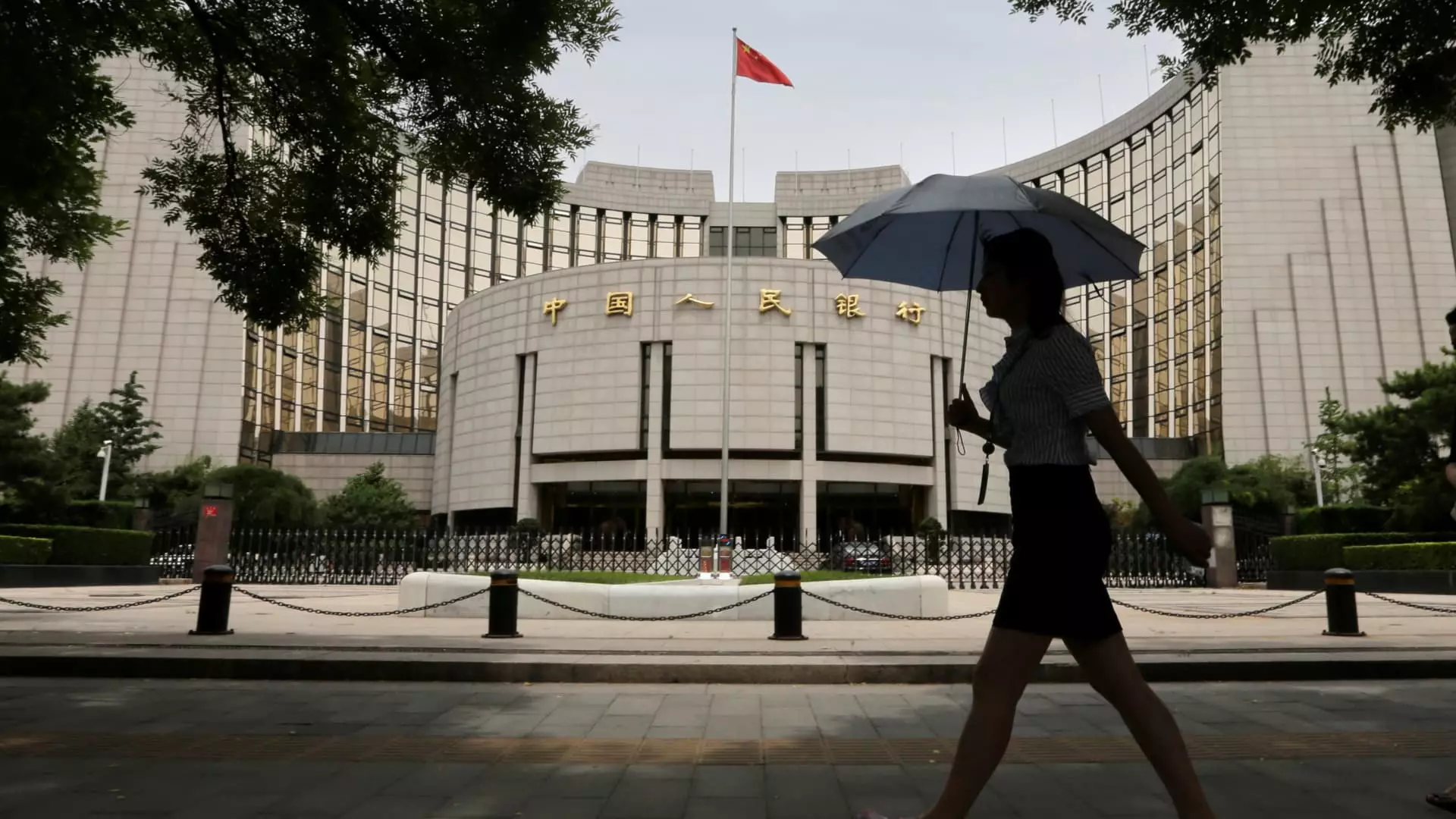In financial markets, expectations can wield significant influence. As the U.S. Federal Reserve appears set to lower interest rates, the potential ripple effects on global economies, particularly China, have come into sharper focus. Not only does this action signify an easing of monetary policy in the U.S., but it also provides the People’s Bank of China (PBoC) with the scope to implement measures that could invigorate their own economy. Importantly, this interplay between U.S. and Chinese financial policies could alter the landscape for investments, specifically in the context of Chinese equities.
Analysts from HSBC have expressed optimism about the prospects for growth sectors in the Chinese market. They forecast a notable advancement in price-to-earnings ratios for growth stocks in China, projecting that these sectors could outperform their value counterparts by an average of 44 percentage points. This optimistic sentiment is underscored by strong earnings reports from sectors like semiconductors and consumer electronics, which have shown impressive performance in the first half of 2024. Steve Sun, an HSBC analyst, emphasizes that this anticipated performance hinges largely on sustained earnings growth, which remains a critical determinant for investors.
However, the outlook for Chinese stocks is not contingent solely upon the prospect of lower interest rates. Analysts caution that significant underlying challenges persist in the Chinese market, asserting that improving business fundamentals and macroeconomic conditions are paramount for attracting foreign investments. Laura Wang of Morgan Stanley highlights that stock valuations in China have shown little correlation with U.S. Treasury yields throughout 2024, underlining a broader disconnect that has hindered foreign investor interest. This observation raises questions about how effectively Chinese equities can leverage U.S. monetary action.
From a valuation perspective, many experts assert that Chinese equities are appealing. Aaron Costello from Cambridge Associates remarks on the attractive pricing of these stocks, though he acknowledges that a significant catalyst is lacking to drive meaningful recovery. The crux of the issue lies in the broader economic climate which remains challenged by deflationary pressures, as evidenced by stagnant consumer price growth. Yi Gang, former governor of the PBoC, emphasized the urgency of addressing these deflationary trends, suggesting a crisis of confidence that extends beyond just the real estate sector.
The cautious sentiment among businesses regarding capital expenditures has emerged as another crucial factor. James Wang from UBS notes that while earnings have improved in the second quarter, overall capital expenditures fell by 4% in the first half of the year—marking the slowest growth since 2017. This hesitance underscores not only a reluctance to invest but a broader uncertainty within the market that could stymie recovery efforts.
The potential easing of U.S. monetary policy could provide a foothold for Chinese markets, especially if the U.S. economy maintains a stable trajectory. HSBC’s predictions suggest that the Hang Seng China Enterprises Index and the Wind All-A index could see average returns of 24.9% and 1.5%, respectively, in the year following the Fed’s first rate cut. This optimistic forecast hinges significantly on investor sentiment and the global economic landscape, which remains subject to fluctuations.
In the search for potential investment opportunities that may benefit from anticipated lower borrowing costs, HSBC has identified several companies with robust growth forecasts and manageable debt levels. Companies like Muyuan Foods, China Southern Airlines, and Hengli Petrochemical have been spotlighted for their potential to thrive in a changing economic environment. These companies exemplify the characteristics that could lead to favorable investment outcomes, provided that broader economic challenges are addressed.
While the anticipated shift in U.S. monetary policy presents a glimmer of hope for Chinese equities, the path forward is fraught with uncertainties. Investors will need to consider a multitude of factors, including macroeconomic conditions and fundamental business health, as they navigate the landscape. Ultimately, addressing the underlying issues of deflation and consumer confidence will be critical for establishing a sustainable recovery in China’s stock market, making it essential for authorities to act decisively.

